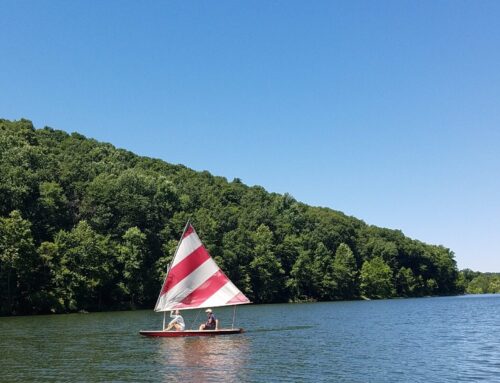The Severn River watershed covers more than 80 mi2 of land in Anne Arundel County and the City of Annapolis, Maryland. Although designated as a Scenic River by the State of Maryland, the Severn is considered impaired with its overall health graded as a C+ in the 2023 Severn River Report Card. Given the large watershed size, the Severn River Association (SRA) identified a need for a long-term strategy to guide future restoration using a phased approach of subwatershed assessment, action plan development, and restoration project implementation. In partnership with SRA, the Center for Watershed Protection (CWP) led a project to better understand current conditions, track the status of project implementation, and build capacity to implement future on-the-ground water quality and habitat restoration actions in the Severn River watershed.
CWP first conducted a prioritizing and ranking of all 108 Severn River subwatersheds with support from a Steering Committee of key watershed partners, including the City of Annapolis and Anne Arundel County representatives. The prioritization was based on the following factors: 1) the need for restoration, 2) the need for planning, and 3) community support for restoration. The resulting strategy for long-term action planning is laid out in the Subwatershed Planning Strategy. The #1 priority subwatershed for restoration was Weems Creek, a 2.2 square mile, heavily developed subwatershed in the City of Annapolis and Anne Arundel County.
Next, CWP developed the Weems Creek Subwatershed Action Plan. The process to develop the plan included prioritizing areas of the subwatershed having no or inadequate water quality treatment. Priority sites were then assessed in the field for the feasibility of installing a restoration project such as a stormwater retrofit, riparian planting, or stream restoration. Of the 37 sites visited, 18 were deemed suitable for projects. Together these projects would cumulatively remove an estimated 0.55 lbs/year of nitrogen, 61.66 lbs/year of phosphorus, and more than 6,000 lbs/year of sediment. CWP ranked the proposed restoration projects based on eight criteria and held a Weems Creek Restoration Community Meeting to collect input and feedback on the potential projects. From this meeting, the community came to a general consensus on six priority projects. Cost estimates for these and the other identified projects as well as potential grant funding sources are also provided in the full plan.
The long-term strategy is for SRA to update or develop action plans for each subwatershed in order of their priority while concurrently designing, permitting, and constructing the projects identified in them. Each subwatershed action plan may take up to ten years for implementation. CWP and SRA will continue this vital work in the Severn watershed by developing an action plan for the Picture Spring Branch subwatershed over the coming year with grant funding from the National Fish and Wildlife Foundation. The Severn River Subwatershed Planning Strategy and Weems Creek Subwatershed Action Plan were also funded through a grant from the National Fish and Wildlife Foundation.
For more information contact Lisa Fraley-McNeal (lfm@cwp.org) or Alexandria Wilkins (ajw@cwp.org).






